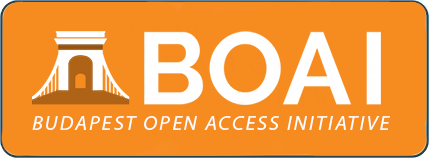Ensuring the Sustainability of Sadaqah Based Crowdfunding Platforms: The Role of Gamification and User Experience
DOI:
https://doi.org/10.33102/jmifr.475Keywords:
Crowdfunding, donation, gamification, user experience, SOR theory, SadaqahAbstract
The inception of technology in the financial world has spawned many innovative financial activities, including crowdfunding. Since the emergence of crowdfunding, fundraising activities have flourished, enabling the implementation of many innovative projects and businesses, including agricultural projects. However, it is a major challenge for a crowdfunding platform to maintain the flow of donations. Most crowdfunding platforms lose half of their donors after their first donation. Therefore, this study proposes the use of gamification to increase and maintain individuals' donations on a crowdfunding platform. In addition, this study also examines the role of user experience as a mediating variable between gamification and donor intention on the crowdfunding platform. Data for this research were collected through a survey using a structured, self-administered questionnaire and involving 148 Muslim donors. Hypothesis testing revealed that gamification positively influences user experience, but not donation intention on a crowdfunding platform. Meanwhile, user experience successfully plays a mediating role. Thus, the results lead to a discussion on the justification of using gamification and suggestions for future research.
Downloads
References
Abdullah, A. (2016). Crowdfunding as an emerging fundraising tool: With special reference to the Malaysian regulatory framework. Islam and Civilisational Renewal, 1, 98–119.
Anaya-Sánchez, R., Castro-Bonaño, J. M., & González-Badía, E. (2020). Millennial consumer preferences in social commerce web design. Revista Brasileira de Gestao de Negocios, 22(1), 123–139. https://doi.org/10.7819/rbgn.v22i1.4038
Anderson, J. C., & Gerbing, D. W. (1988). Structural equation modeling in practice: A review and recommended two-step approach. Psychological Bulletin, 103(3), 411–423. https://doi.org/10.1037/0033-2909.103.3.411
Ashforth, B. E., & Humphrey, R. H. (1995). Emotion in the workplace: A reappraisal. Human Relations, 48(2), 97–125.
Ba, Z., Zhao, Y. C., Zhou, L., & Song, S. (2020). Exploring the donation allocation of online charitable crowdfunding based on topical and spatial analysis: Evidence from the Tencent
GongYi. Information Processing & Management, 57(6), 102322.
Bagozzi, R. P. (1986). Attitude formation under the theory of reasoned action and a purposeful behaviour reformulation. British Journal of Social Psychology, 25(2), 95–107. https://doi.org/10.1111/j.2044-8309.1986.tb00708.x
Bartel, A., & Hagel, G. (2014). Engaging students with a mobile game-based learning system in university education. IEEE Global Engineering Education Conference, EDUCON, 957–960. https://doi.org/10.1109/EDUCON.2014.6826215
Belleflamme, P., Lambert, T., & Schwienbacher, A. (2014). Crowdfunding: Tapping the right crowd. Journal of Business Venturing, 29(5), 585–609. https://doi.org/10.1016/j.jbusvent.2013.07.003
Behl, A., & Dutta, P. (2020). Engaging donors on crowdfunding platform in Disaster Relief Operations (DRO) using gamification: A Civic Voluntary Model (CVM) approach. International Journal of Information Management, 54, 102140.
Bhattacherjee, A. (2001). Understanding information systems continuance: An expectation-confirmation model. MIS Quarterly: Management Information Systems, 25(3), 351–370. https://doi.org/10.2307/3250921
Bilgihan, A., Okumus, F., Nusair, K., & Bujisic, M. (2014). Online experiences: Flow theory, measuring online customer experience in e-commerce and managerial implications for the lodging industry. Information Technology and Tourism, 14(1), 49–71. https://doi.org/10.1007/s40558-013-0003-3
BNM. (2020). Internet Banking and mobile banking subscribers. Bank Negara Malaysia.
Brakus, J. J., Schmitt, B. H., & Zarantonello, L. (2009). Brand experience: What is it? How is it measured? Does it affect loyalty? Journal of Marketing, 73(3), 52–68. https://doi.org/10.1509/jmkg.73.3.52
Burtch, G., Hong, Y., & Liu, D. (2018). The role of provision points in online crowdfunding. Journal of Management Information Systems, 35(1). https://doi.org/10.1080/07421222.2018.1440764
Chen, S. C., Yen, D. C., & Hwang, M. I. (2012). Factors influencing the continuance intention to the usage of Web 2.0: An empirical study. Computers in Human Behavior, 28(2), 933–941. https://doi.org/10.1016/j.chb.2011.12.014
Chen, Y., Dai, R., Yao, J., & Li, Y. (2019). Donate time or money? The determinants of donation intention in online crowdfunding. Sustainability (Switzerland), 11(16). https://doi.org/10.3390/su11164269
Cózar-Gutiérrez, R., & Sáez-López, J. M. (2016). Game-based learning and gamification in initial teacher training in the social sciences: an experiment with MinecraftEdu. International Journal of Educational Technology in Higher Education, 13(1), 2. https://doi.org/10.1186/s41239-016-0003-4
Dean, H., & Khan, Z. (1997). Muslim perspectives on welfare. Journal of Social Policy, 26(2), 193–209. https://doi.org/10.1017/S0047279497004972
Deterding, S., Dixon, D., Khaled, R., & Nacke, L. (2011). From game design elements to gamefulness: Defining “Gamification.” Proceedings of the MindTrek Conference 2011, 9–15. https://doi.org/10.1145/2181037.2181040
Deterding, S., Sicart, M., Nacke, L., O’Hara, K., & Dixon, D. (2011). Gamification. using game-design elements in non-gaming contexts. Proceedings of the 2011 Annual Conference Extended Abstracts on Human Factors in Computing Systems - CHI EA ’11, 2425–2428. https://doi.org/10.1145/1979742.1979575
Donovan, R., & Rossiter, J. (1982). Store atmosphere: an environmental psychology approach. Journal of Retailing, 58(1), 34–57.
Eagly, A. H., & Chaiken, S. (1993). The psychology of attitudes: Book review. In Harcourt Brace Jovanovich. Harcourt Brace Jovanovich College Publishers.
Eroglu, S. A., Machleit, K. A., & Davis, L. M. (2003). Empirical testing of a model of online store atmospherics and shopper responses. Psychology and Marketing, 20(2), 139–150. https://doi.org/10.1002/mar.10064
Fogg, B. (2009). A behavior model for persuasive design. ACM International Conference Proceeding Series, 350, 1–7. https://doi.org/10.1145/1541948.1541999
Forbes, H., & Schaefer, D. (2017). Guidelines for successful crowdfunding. Procedia CIRP, 60, 398–403. https://doi.org/10.1016/j.procir.2017.02.021
Gupta, R., & Mathad, K. (2017). A study of factors affecting consumer behavioural intentions towards adoption of gamification. Indian Journal of Marketing, 47(7), 7–19. https://doi.org/10.17010/ijom/2017/v47/i7/116471
Haas, P., Blohm, I., & Leimeister, J. M. (2014). An empirical taxonomy of crowdfunding intermediaries. 35th International Conference on Information Systems “Building a Better World Through Information Systems”, ICIS 2014, 1–18.
Hair, J. F., Babin, B. J., & Krey, N. (2017). Covariance-based structural equation Modeling in the journal of advertising: Review and recommendations. Journal of Advertising, 46(1), 163–177. https://doi.org/10.1080/00913367.2017.1281777
Hamari, J., Koivisto, J., & Sarsa, H. (2014). Does gamification work? - A literature review of empirical studies on gamification. Proceedings of the Annual Hawaii International Conference on System Sciences, 3025–3034. https://doi.org/10.1109/HICSS.2014.377
Hassan, R., & Zainudin, U. M. (2015). Legal and regulatory framework for equity crowdfunding in Malaysia. Journal of Chemical Information and Modeling, 53(9), 1689–1699. https://doi.org/10.1017/CBO9781107415324.004
Hsieh, P. S. (2020). Gamification effects on users’ stickiness on the payment platform: The role of user experience. Proceedings of the 24th Pacific Asia Conference on Information Systems: Information Systems (IS) for the Future, PACIS 2020, 188.
Ilham, R., & Fajar, A. N. (2020). An effective model to measure gamification implementation to improve customers’ interest in using e-commerce systems under the pandemics. Journal of System and Management Sciences, 10(4), 62–85. https://doi.org/10.33168/JSMS.2020.0405
Iman, A. H. M., & Mohammad, M. T. S. H. (2017). Waqf as a framework for entrepreneurship. Humanomics, 33(4), 419–440. https://doi.org/10.1108/H-01-2017-0015
Jaziri, R., & Miralam, M. (2019). Modelling the crowdfunding technology adoption among novice entrepreneurs: An extended TAM model. Entrepreneurship and Sustainability Issues, 7(1), 353.
Isaac, R. G., Herremans, I. M., & Kline, T. J. (2010). Intellectual capital management enablers: A structural equation modeling analysis. Journal of Business Ethics, 93(3), 373–391. https://doi.org/10.1007/s10551-009-0227-5
Isaacs, S. (2015). The difference between gamification and game-based learning. An International Education Association (ASCD). https://inservice.ascd.org/the-difference-between-gamification-and-game-based-learning/
Kang, M. H., Gao, Y., Wang, T., & Zheng, H. (2016). Understanding the determinants of funders’ investment intentions on crowdfunding platforms: A trust-based perspective. Industrial Management and Data Systems, 116(8), 1800–1819. https://doi.org/10.1108/IMDS-07-2015-0312
Khan, A. A. (2012). Religious obligation or altruistic giving? Muslims and charitable donations. In M. Barnett & J. Stein (Eds.), Sacred Aid: Faith and Humanitarianism. Oxford Scholarship. https://doi.org/10.1093/acprof:oso/9780199916023.003.0004
Kontogiannidis, P., Theriou, G., & Sarigiannidis, L. (2017). Crowdfunding: Exploring the factors associated with the users’ intention to finance a project online. International Journal of Web Based Communities, 13(1), 73–101. https://doi.org/10.1504/IJWBC.2017.082721
Kroessin, M. (2007). Islamic charities and the ‘War on Terror’: Dispelling the myths. Humanitarian Exchange Magazine, 38, 27–29.
Kumar, A., & Kim, Y. K. (2014). The store-as-a-brand strategy: The effect of store environment on customer responses. Journal of Retailing and Consumer Services, 21(5), 685–695. https://doi.org/10.1016/j.jretconser.2014.04.008
Kuo, Y. F., Lin, C. S., & Wu, C. H. (2020). Why do people intend to back crowdfunding projects? A perspective on social cognitive theory. Journal of Electronic Commerce Research, 21(3), 180–196.
Lacan, C., & Desmet, P. (2017). Does the crowdfunding platform matter? Risks of negative attitudes in two-sided markets. Journal of Consumer Marketing, 34(6), 472–479. https://doi.org/10.1108/JCM-03-2017-2126
Landers, R. N., Bauer, K. N., & Callan, R. C. (2017). Gamification of task performance with leaderboards: A goal setting experiment. Computers in Human Behavior, 71, 508–515. https://doi.org/10.1016/j.chb.2015.08.008
Liu, D., Santhanam, R., & Webster, J. (2017). Toward meaningful engagement: A framework for design and research of gamified information systems. MIS Quarterly: Management Information Systems, 41(4), 1011–1034. https://doi.org/10.25300/MISQ/2017/41.4.01
Liu, L., Suh, A., & Wagner, C. (2018). Empathy or perceived credibility? An empirical study on individual donation behavior in charitable crowdfunding. Internet Research, 28(3), 623–651. https://doi.org/10.1108/IntR-06-2017-0240
MCMC. (2020). Internet user survey. Malaysian Communications and Multimedia Commission.
Mekler, E. D., Brühlmann, F., Opwis, K., & Tuch, A. N. (2013). Do points, levels and leaderboards harm intrinsic motivation?: an empirical analysis of common gamification elements. Gamification ’13: Proceedings of the First International Conference on Gameful Design, Research, and Applications, 66–73.
Mishra, A., Dash, S. B., & Cyr, D. (2014). Linking user experience and consumer-based brand equity: The moderating role of consumer expertise and lifestyle. Journal of Product and Brand Management. https://doi.org/10.1108/JPBM-12-2013-0459
Mohd Thas Thaker, M. A. Bin. (2018). Factors influencing the adoption of the crowdfunding-waqf model (CWM) in the waqf land development. Journal of Islamic Marketing, 9(3), 578–597. https://doi.org/10.1108/JIMA-05-2016-0043
Mohd Thas Thaker, M. A. B., & Allah Pitchay, A. (2018). Developing waqf land through crowdfunding-waqf model (CWM): the case of Malaysia. Journal of Islamic Accounting and Business Research, 9(3), 448–456. https://doi.org/10.1108/JIABR-05-2016-0062
Mollen, A., & Wilson, H. (2010). Engagement, telepresence and interactivity in online consumer experience: Reconciling scholastic and managerial perspectives. Journal of Business Research, 63(9–10), 919–925. https://doi.org/10.1016/j.jbusres.2009.05.014
Opoku, R. A. (2013). Examining the motivational factors behind charitable giving among young people in a prominent Islamic country. International Journal of Nonprofit and Voluntary Sector Marketing, 18(3), 172–186. https://doi.org/10.1002/nvsm.1457
Powers, K. L., Brooks, P. J., Aldrich, N. J., Palladino, M. A., & Alfieri, L. (2013). Effects of video-game play on information processing: A meta-analytic investigation. Psychonomic Bulletin and Review, 40(6), 1055–1079. https://doi.org/10.3758/s13423-013-0418-z
Preacher, K. J., & Hayes, A. F. (2008). Asymptotic and resampling strategies for assessing and comparing indirect effects in multiple mediator models. Behavior Research Methods, 40(3), 879–891. https://doi.org/10.3758/BRM.40.3.879
Ringle, C. M., Wende, S., & Becker, J. M. (2015). SmartPLS. SmartPLS.
Rodrigues, L. F., Costa, C. J., & Oliveira, A. (2017). How does the web game design influence the behavior of e-banking users? Computers in Human Behavior, 74, 163–174. https://doi.org/10.1016/j.chb.2017.04.034
Rodrigues, L. F., Oliveira, A., & Costa, C. J. (2016). Playing seriously - How gamification and social cues influence bank customers to use gamified e-business applications. Computers in Human Behavior, 63, 392–407. https://doi.org/10.1016/j.chb.2016.05.063
Rodriguez-Ricardo, Y., Sicilia, M., & López, M. (2019). Altruism and internal locus of control as determinants of the intention to participate in crowdfunding: The mediating role of trust. Journal of Theoretical and Applied Electronic Commerce Research, 14(3), 1–16. https://doi.org/10.4067/s0718-18762019000300102
Salehi-Esfahani, S., & Kang, J. (2019). Why do you use Yelp? Analysis of factors influencing customers’ website adoption and dining behavior. International Journal of Hospitality Management, 78(December 2018), 179–188. https://doi.org/10.1016/j.ijhm.2018.12.002
Schmitt, B., Joško Brakus, J., & Zarantonello, L. (2015). From experiential psychology to consumer experience. Journal of Consumer Psychology, 25(1), 166–171. https://doi.org/10.1016/j.jcps.2014.09.001
Sheng, M. L., & Teo, T. S. H. (2012). Product attributes and brand equity in the mobile domain: The mediating role of customer experience. International Journal of Information Management, 32(2), 139–146. https://doi.org/10.1016/j.ijinfomgt.2011.11.017
Singer, A. (2013). Giving practices in Islamic societies. Social Research, 80(2), 341–358.
Slattery, P., Finnegan, P., & Vidgen, R. (2019). Creating compassion: How volunteering websites encourage prosocial behaviour. Information and Organization, 29(1), 57–76. https://doi.org/10.1016/j.infoandorg.2019.02.001
Thiel, S. K., & Fröhlich, P. (2017). Gamification as motivation to engage in location-based public participation? Lecture Notes in Geoinformation and Cartography, 399–421. https://doi.org/10.1007/978-3-319-47289-8_20
Triantoro, T., Gopal, R., Benbunan-Fich, R., & Lang, G. (2019). Would you like to play? A comparison of a gamified survey with a traditional online survey method. International Journal of Information Management, 49, 242–252. https://doi.org/10.1016/j.ijinfomgt.2019.06.001
Wakefield, R. L., & Whitten, D. (2006). Mobile computing: A user study on hedonic/utilitarian mobile device usage. European Journal of Information Systems, 15(3), 292–300. https://doi.org/10.1057/palgrave.ejis.3000619
Wu, W. Y., Lee, C. L., Fu, C. su, & Wang, H. C. (2013). How can online store layout design and atmosphere influence consumer shopping intention on a website? International Journal of Retail & Distribution Management, 42(1), 4–24. https://doi.org/10.1108/IJRDM-01-2013-0035
Yang, Q., & Lee, Y. C. (2019). An investigation of enablers and inhibitors of crowdfunding adoption: Empirical evidence from startups in China. Human Factors and Ergonomics in Manufacturing & Service Industries, 29(1), 5-21.
Zhao, Q., Chen, C. Der, Wang, J. L., & Chen, P. C. (2017). Determinants of backers’ funding intention in crowdfunding: Social exchange theory and regulatory focus. Telematics and Informatics, 34(1), 370–384. https://doi.org/10.1016/j.tele.2016.06.006
Zollo, L., Filieri, R., Rialti, R., & Yoon, S. (2020). Unpacking the relationship between social media marketing and brand equity: The mediating role of consumers’ benefits and experience. Journal of Business Research, 117, 256–267. https://doi.org/10.1016/j.jbusres.2020.05.001
Downloads
Published
How to Cite
Issue
Section
License
Copyright (c) 2023 Nur Aqilah Hazirah Mohd Anim, Suhaida Herni Suffarruddin, Najwa Mohd Najib, Nur Adyani Sabarudin

This work is licensed under a Creative Commons Attribution 4.0 International License.















